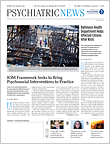The concept of integrated mental health care takes on different forms in other parts of the world where there are few psychiatrists. These countries may have a lot to teach us about how we could improve our practices and reach more people in need in the United States. This month, I have invited Vikram Patel, Ph.D., a psychiatrist and a leading expert in global mental health based in London and India, to share a global perspective on integrated mental health care. —Jürgen Unützer, M.D., M.P.H.
Probably the most surprising observation on the state of mental health care in the United States for a practitioner of global mental health—a discipline focused on access to care in low- and middle-income countries—is that amid the apparent glut of resources, so many people with mental disorders do not receive care. As one example, up to 60 percent of people with active mental disorders reported in the National Comorbidity Survey failed to seek care from any type of biomedical provider, and just 12 percent had sought care from a psychiatrist. An even smaller proportion was deemed to have received adequate care. Thus, the effective coverage of mental health care in the United States is only marginally higher than that of some of the world’s poorest countries.
Here is the puzzle for a practitioner more accustomed to environments that are extremely scarce in resources: these numbers exist despite the United States being the world’s richest country in terms of every indicator of mental health resources, from numbers of psychiatrists to numbers of dollars spent per capita. (The number of psychiatrists in California alone exceeds the total number in the continent of Africa!) While some lobbies argue that this indicates the need for even more psychiatrists and other specialized services, I believe that at least part of the problem lies in the way mental health care is practiced.
Offering more expensive specialized mental health resources will not address the lack of access to mental health care. We must first address the barriers between mental health professionals and the communities they serve. Most of the mental health interventions offered in the United States are heavily medicalized, do not engage sufficiently with mobilizing personal and community resources, are delivered in highly specialized and expensive settings, use a bewilderingly complex language and concepts that alienate ordinary people, and fail to address the powerful social determinants of mental disorders.
The most exciting developments in mental health care paradigms in recent years have been driven by innovations in low- and middle-income countries, which enjoy only a tiny fraction of the world’s mental health resources and where illness models are widely divergent from biomedical psychiatric frameworks. In an effort to improve outcomes in people affected by mental disorders in these populations, innovators have challenged and reframed three key aspects of mental health care: what comprises the intervention, who provides it, and where it is provided.
In these countries, mental health interventions tend to avoid alienating diagnostic labels and integrate culturally appropriate explanatory models. These interventions target the outcomes that matter the most to affected people and their families, especially impairments in daily functioning. Psychological treatments reduce the focus on tasks requiring literacy, use culturally appropriate materials and local stories with local characters, and involve family members; and in the case of drug treatments, low-cost generic medications are used.
The front-line provider of interventions is typically a person drawn from the local community who has no prior mental health training or experience but who is taught a set of skills (typically in a practice-based format) to deliver evidence-based psychosocial interventions, including adherence support for those on long-term medications. The location of care is wherever the patient finds it most convenient, typically in primary health care settings or the patient’s own home. These innovations have significance in all countries of the world, rich and poor, where mental health care treatment gaps remain stubbornly high irrespective of the availability of specialist resources.
To improve mental health care coverage, we will need to also address the credibility gap between the paradigms of the diagnosis and treatment of mental disorders adopted by specialists and much of the rest of the world. To bridge this gap, we need to adapt contemporary classifications like DSM-5 into one that can communicate effectively with communities, a task that would need to distinguish distress from disorders, based on the need for biomedical interventions. This alone would take away about 50 percent of the burden of mental “disorders” from the purview of biomedical attention, reducing the stigma associated with such labels and helping overstretched mental health services focus on those who can benefit the most.
Those with mental health distress should be directed to low-cost interventions outside the biomedical sector, from social work interventions to self-guided interventions. Those with mental disorders should primarily be treated in collaborative care frameworks involving a team of community health workers, the general physician, and the mental health specialist collaborating with the patient and family. Generic medications and trans-diagnostic psychological treatments offer the most cost-effective interventions for the vast majority of those affected by mental disorders.
I have often been asked if such innovations have a role in the United States. In fact, such practices are already happening across the United States, such as community mental health worker programs in Wisconsin, Iowa, Minnesota, and the remote tribal communities of Alaska.
It is time for American psychiatry as a profession to espouse, champion, and partner with such approaches to mental health care not only to help reduce the treatment gap for mental disorders, but also to reduce the growing credibility gap between psychiatry and the general population. ■

